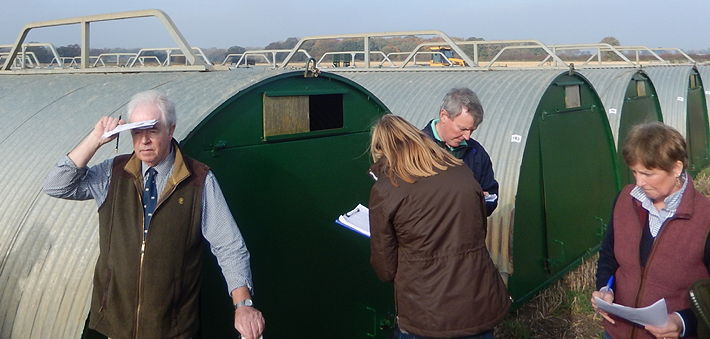If there are any green shoots of recovery they have yet to break the surface, although there have been signs of some but not all of the big players taking better numbers of pigs than previously.
Unfortunately, the SPP went down this week by a further 0.98p at 137.87p and average weights are at record levels with the latest GB finished pig average hitting new heights at 95.8kg deadweight.
German producer prices have however been holding steady but still at very low levels with pig meat from the EU is still undercutting the domestic market by a wide margin.
GB weekly contribution prices have seen an almost universal stand on between 130p/kg at the bottom end and 138p/kg at the top, but with COP levels reported to be around 170p/kg there is a long long way to go before any equilibrium is reached and producers and their bank managers can start to breathe more easily.
Some but not all regular spot buyers have agreed deals in the 106p – 112p/kg range but the real party poopers are in the heavy pig sector and there are still few answers as to how the backlog can be effectively cleared. The cull sow market is also sharing the pain with most worth little more than they were a week ago and traded between 20p – 24p/kg.
With large numbers of culls coming forward slaughtering space remains limited and in many cases sows are coming to little more (and sometime less) than £30/head compared with 35p/kg a year ago, not to mention 125p/kg or more in the ‘good old days’.
However a slim ray of sunlight is that concerns over the strength of the UK economy have hit the value of the Pound and the Euro has popped up trading today at 84.2p compared with 83.2p a week ago.
Weaner values also continue to drop with the latest AHDB 7kg ex farm average down by£1.06/head to £32.72/head for contract piglets, but spot weaners remain outcasts in a fragile market with very few takers until a clearer picture emerges in connection with future finished pig values and feed costs.
However further modest price falls in the cereals market will help a little with feed wheat values dropping by almost £5/t with the weekly GB average quoted at £215.30/t.
Futures prices are also currently reflecting these slightly easier trends with March feed wheat quoted at £217/t and September at £198/t. Barley values have also slipped a shade with March traded at £211/t and September at £184/t.
However the picture in the proteins sector is still showing significant increases in values with Hipro soya traded for March at £436/t and rapemeal up by £15/t at £316/t.
And finally, there should soon be signs of an improvement in pig prices which currently remain at very low levels, and industry sources are indicating that we could see a significant shortage of pigs coming forward on the domestic and EU market by late spring/early summer reflecting the high rate of sow slaughtering which took place last year.
With inflation rates on the rise the retail price of food is also forecast to increase and hopefully some of this should rub off on the pig industry.
One consolation is that producers are likely to lose less money this month than they did in January because February is a shorter month!




